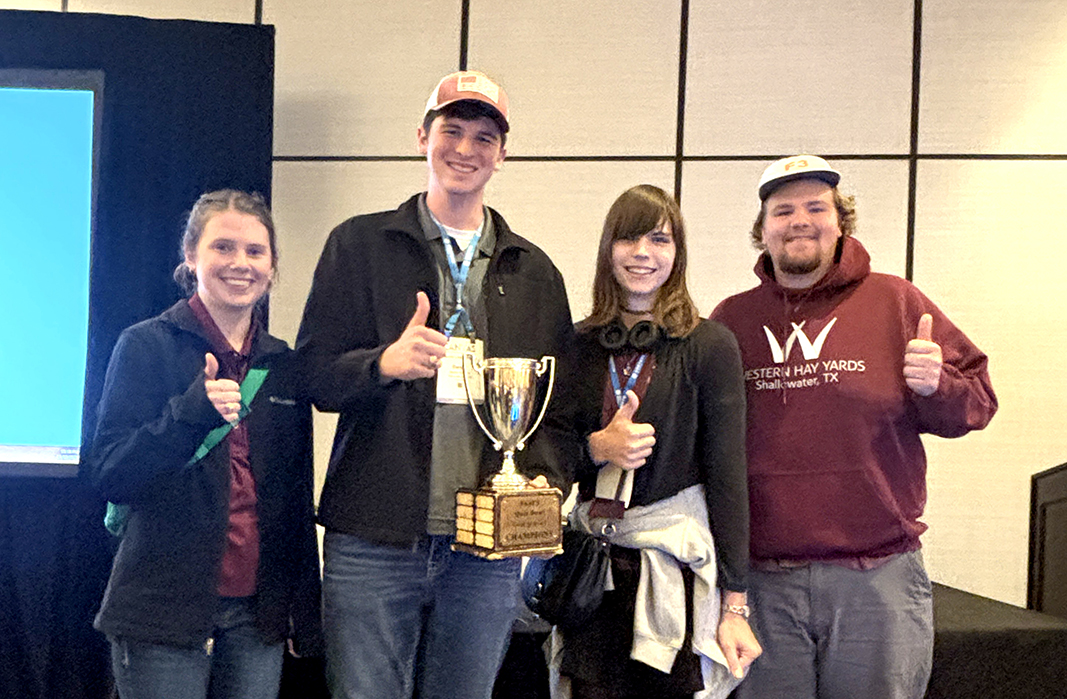Dr. Luc Berghman awarded Zoetis Fundamental Science Award
- Writer: Adam Russell, 903-834-6191, [email protected]
- Contact: Dr. Luc Berghman, 979-847-7387, [email protected]
COLLEGE STATION — Dr. Luc Berghman, associate professor in the departments of poultry science and veterinary pathobiology at Texas A&M University in College Station and Texas A&M AgriLife Research, received a microscope from his biologist uncle when he was a child, and he’s been enthralled with living organisms ever since.
Berghman recently received 2016 Zoetis Fundamental Science Award for his research work.

Over the past three decades, Berghman has retooled his career from his initial study of avian hormones to, more recently, the study of the avian immune system. But his passion remains focused on the development of basic knowledge that will improve poultry performance by protecting flocks against infectious diseases.
During the past 18 years with Texas A&M AgriLife Research, Berghman has produced seminal work on the avian immune system, specifically its sentinel cells or antigen-presenting cells. This work has culminated in the development of a novel “antibody-guided” vaccine platform in which antibodies that recognize the sentinel cells help guide vaccines to the heart of the bird’s immune system to protect them faster, better and longer against pathogens, including avian influenza. His work has been funded by the U.S. Department of Agriculture and others.
Because of those efforts, Berghman was recently presented with the award at the 2016 Poultry Science Association Annual Meeting in New Orleans, Louisiana. The award was given in recognition of outstanding achievements in basic disciplines of genetics, genomics, immunology and molecular, cellular, developmental biology, physiology, poultry health and proteomics. It also recognized his sustained high quality contributions to fundamental science that has advanced the field of poultry science.
Berghman’s research on antibody-guided vaccines is still in the research stage but is moving forward rapidly because there is immense interest within the industry to protect birds from diseases that can decimate flocks at great expense to producers, he said.
So far, immunizations are being applied in various ways, Berghman said, including orally and by injection. The next step will be to apply the science in a way that birds can be immunized more readily in mass numbers via drinking water or by spray vaccination in the hatchery to make the application cost effective throughout the industry.
It will become cost effective soon for high-value birds including laying hens, which can live and produce eggs for several years, as well as turkeys, he said. Longer life spans mean increased possibility of exposure to deadly diseases that can wipe out an entire facility no matter how tight biosecurity is.
In 2015, when an outbreak of avian influenza affected millions of chickens in laying facilities in Minnesota and Iowa, Berghman said officials monitoring the epidemic could anticipate which facilities would be devastated next by the direction the wind was blowing as the disease spread through dust particles.
“In the U.S. we isolate the outbreak and let it die out within a certain perimeter,” he said. “The emphasis is on biosecurity, but even the most secure facilities face challenges. It’s an ongoing battle and the question is not if but when and how bad the next outbreak will hit.”
The development of the vaccine platform to enhance the performance of any vaccine would be a major breakthrough in protecting birds, producers and the industry, he said.
Berghman earned his bachelor’s and master’s degrees in zoology from the Katholieke Universiteit in Leuven, Belgium. He received his doctorate summa cum laude in 1988 from the graduate program in animal physiology at the university while working on monoclonal antibody-based immunochemistry of poultry pituitary hormones.
In 1998, he moved to Texas A&M University in a joint appointment in the departments of poultry science and veterinary pathobiology where he received tenure and was promoted to associate professor in 2005.
His work has resulted in a number of patented technologies which are currently licensed from Texas A&M University or jointly licensed from Texas A&M and the University of Arkansas for commercial development.
“There is satisfaction in being recognized as making a positive impact in the field but it really is a team award,” he said. “The people who taught me, the graduate students and post-doctorates who are the real engines in the lab, and the other colleagues I’ve worked with throughout my career, I owe them a lot of the credit.”





